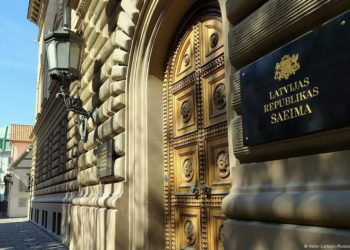President Trump’s unexpected declaration on Thursday that he was ordering the U.S. military to resume nuclear testing prompted visions of a return to the worst days of the Cold War, when the United States, Russia and China were regularly detonating new weapons, first in the atmosphere and outer space, then underground.
It was an era of terrifying threats and counter-threats, of dark visions of Armageddon and theories of deterrence by mutually assured destruction. That age supposedly ended with the arrival of the Comprehensive Nuclear-Test-Ban Treaty that nations agreed to in the mid-1990s. But not enough of the signatories ratified it for the treaty to formally come into force. Its objective was to starve the arms race by cutting off new tests and the cycle of retaliation they engendered.
Mr. Trump has now revived the debate inside the national security community over whether to break the tradition of observing that treaty, which some of his former aides have argued impedes the country’s ability to demonstrate “peace through strength.” On Air Force One, returning from Korea, the president told reporters he had made the call because of all the other countries conducting nuclear tests.
“We’ve halted it years — many years — ago,” Mr. Trump said, referring to the fact that the last U.S. explosive test of a nuclear weapon was in 1992, during the George H.W. Bush administration. “But with others doing testing, I think it is appropriate that we do also.”
Except, of course, they aren’t. The only nation that has been regularly testing in the past quarter century is North Korea, and its last explosive test was in September 2017.
Moscow has not conducted a test in 35 years, in the last days of the Soviet Union. Mr. Trump, however, may have been confusing nuclear weapons tests with Russia’s recent declaration that it had tested two exotic delivery vehicles for nuclear weapons: a nuclear-powered cruise missile and an undersea torpedo, called Poseidon, that could cross the Pacific and strike the West Coast of the United States. Both are designed to evade American missile defenses, which look for the warheads of intercontinental ballistic missiles as they speed through space.
Mr. Trump told reporters that he was not including China on that list of testing nations; its last explosive test was 29 years ago, though there is some evidence the country has made preparations at Lop Nur, where Mao first demonstrated China’s nuclear capabilities in the 1960s, in case it decides to resume.
Mr. Trump’s own senior official in charge of nuclear testing — Brandon Williams, a former one-term member of Congress from upstate New York — was asked point-blank during his confirmation hearing in April whether the United States needed to go back to explosive testing.
“I would not advise testing, and I think we should rely on the scientific information,” Mr. Williams said, referring to such things as data gathered from supercomputer modeling. But he quickly noted the decision would be made “above my pay grade.”
Apparently, that is exactly what happened. In the hour before Mr. Trump met Xi Jinping, China’s leader, in South Korea on Thursday, he sent out a social media post saying he had ordered the “Department of War,” as he calls the Defense Department, to resume tests “immediately.” His qualifier that the tests would occur “on an equal basis” with U.S. rivals left many national security officials scratching their heads. (It was also puzzling because the Energy Department, not the Pentagon, is responsible for testing.)
Mr. Trump provided no rationale for resuming the testing, other than his incorrect statement that others were doing the same. He boasted that “the United States has more Nuclear Weapons than any other country,” which is incorrect — Russia has more. (Many of the weapons in Russia’s arsenal are small battlefield weapons of the kind American officials worried in October 2022 would be used against Ukraine.)
He said China was a “distant third” in its capabilities. That is true, but they are also growing fast. The Pentagon estimated during the Biden administration that China would have 1,000 deployed weapons by 2030 and would hit rough parity with the United States and Russia in 2035.
Speaking to reporters on Thursday, Vice President JD Vance said that testing the nuclear arsenal was important to make sure it “actually functions properly.”
“To be clear,” he said, “we know that it does work properly, but you got to keep on top of it over time, and the president just wants to make sure that we do that.” He made no reference to testing “on an equal basis” with other nations.
Many experts believe that if the United States resumes testing, it would essentially give permission to other nations to do the same — roughly 100 days before the last arms control treaty between the United States and Russia, limiting the size of their arsenals, is set to expire.
Nuclear experts say that both Russia and China are prepared to conduct nuclear detonations at their underground test sites fairly rapidly. That is in contrast to the United States, which is seen as having made few serious preparations. Its test site is a desolate expanse of the Nevada desert bigger than the state of Rhode Island.
During Mr. Trump’s first term, he revived the possibility of new American testing. In addition to discussing a restart of underground detonations, officials called for major reductions in the preparation time for a U.S. nuclear test resumption. The federal agency in charge of the nation’s nuclear test site ordered the required time for preparations to drop from years to as few as six months.
Nuclear experts saw the goal as unrealistic because testing equipment at the sprawling Nevada site had fallen into disrepair, or vanished.
Even so, Project 2025, the 2023 right-wing blueprint for Mr. Trump’s presidency, echoed the push for a quickening. It called on Washington to forego the lengthy period of preparation altogether and “move to immediate test readiness” in order to give the president “maximum flexibility in responding to adversary actions.”
The drumbeat continued in 2024 when Robert C. O’Brien, a former national security adviser to Mr. Trump, said in Foreign Affairs that Washington “must test new nuclear weapons for reliability and safety in the real world.” But his core argument seemed less about a scientific need for explosive testing than about a political one — to demonstrate to rising and aggressive powers that the United States, which opened the nuclear age when it dropped two atomic weapons on Japan, remained prepared to use the ultimate weapon.
Critics say a testing restart would incite a global arms race. They note that directors of the national labs in charge of the nation’s atomic arsenal have repeatedly testified to Congress that the United States did not need to return to nuclear detonations.
In lieu of testing, the United States now relies on top experts and machines at the nation’s weapons labs to verify the lethality of the country’s arsenal. Today the machines include room-size supercomputers, the world’s most powerful X-ray machine and a system of lasers the size of a sports stadium. No other country has such an extensive array of nonnuclear testing tools.
In contrast to laboratory studies, nuclear testing underground in explosive detonations lets scientists uncover major flaws in prototype arms and fine-tune new weapon designs. During the Cold War, China conducted 45 test explosions at Lop Nur, its underground test site in the Western desert. In comparison, France set off 210, Russia 715 and the United States 1,030.
Such tests slowly concluded at the end of the Cold War. In 1996, the stoppage was formalized in the global test ban. The world’s atomic powers signed it as a way to curb a costly nuclear arms race that was spinning out of control. But it has been an essentially voluntary agreement, since the U.S. Senate never ratified it, and other countries held back formal approval as well.
Siegfried S. Hecker, a former director of the Los Alamos weapons lab in New Mexico, where the first atomic bomb was created, has long argued that the test ban favors Washington because it bars pact-abiding rivals from catching up on the huge edge the United States possesses in advanced nuclear arms.
“Yes, we can learn things by nuclear testing,” Dr. Hecker said in an interview. “But when you look at the big picture, we have much more to lose by going back to testing than we have to gain.”
The test disparities give Washington a military edge because they keep other powers from making their arsenals more diverse and deadly.
David E. Sanger covers the Trump administration and a range of national security issues. He has been a Times journalist for more than four decades and has written four books on foreign policy and national security challenges.
William J. Broad has reported on science at The Times since 1983. He is based in New York.
The post Trump’s Call to Resume Nuclear Testing After Decades Revives a Cold War Debate appeared first on New York Times.




